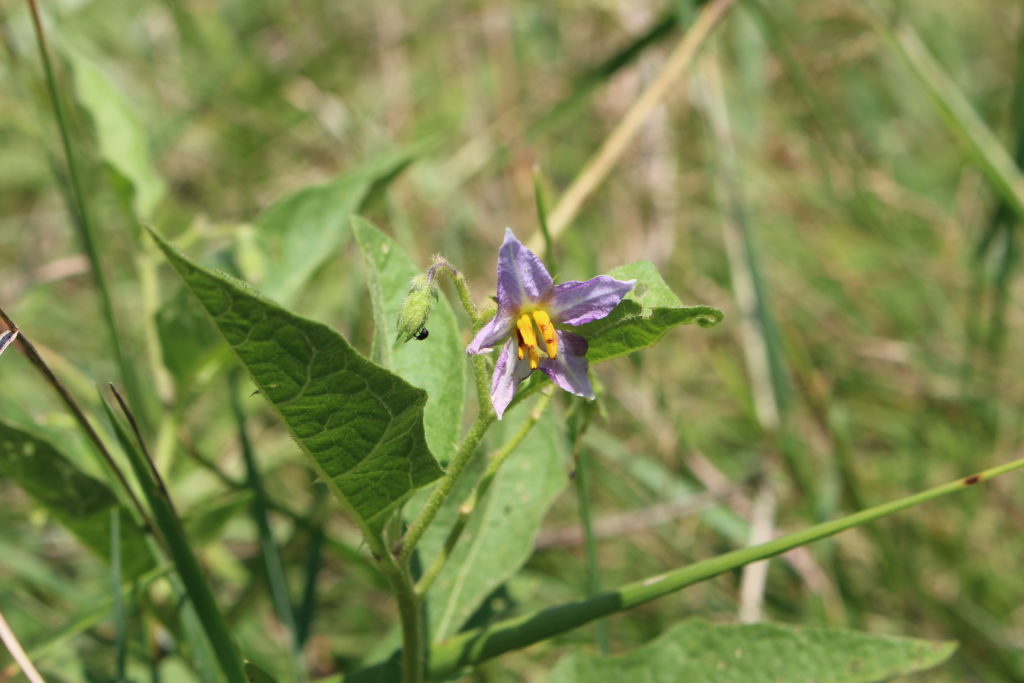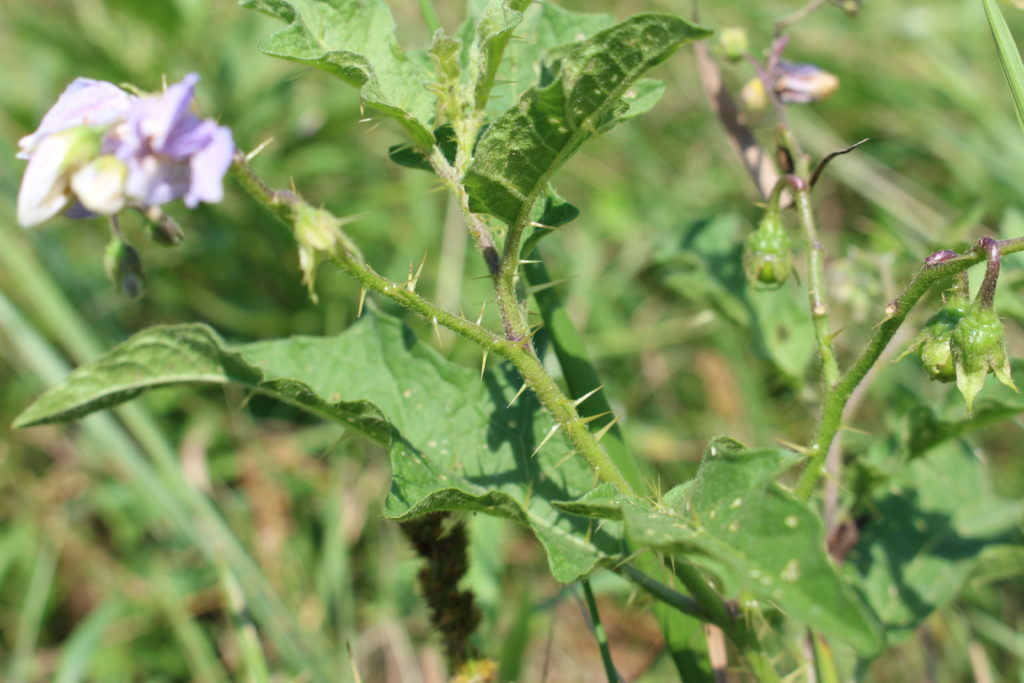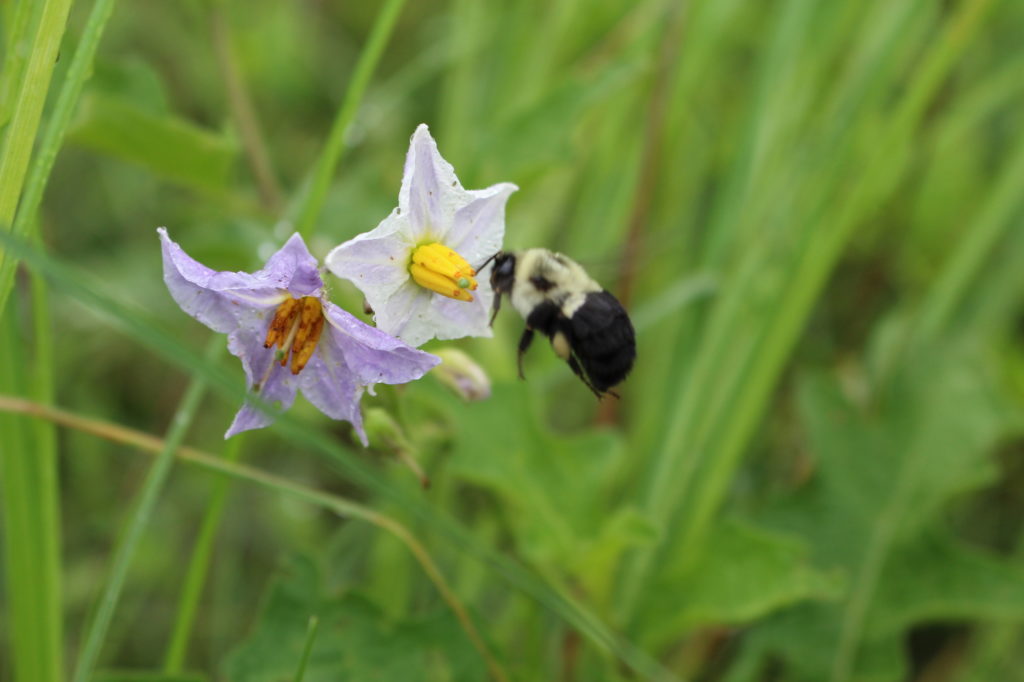
What’s in Bloom | Horse-nettle
July 28, 2020
Horse-nettle (Solanum carolinense), also known as Carolina horse-nettle, is a member of the potato family (Solanaceae). It is a perennial herb native to most of the continental United States. It can be grow anywhere from 1/2 – 3 feet tall and is found in pastures, crop fields, roadsides, and other grassy areas. If you have ever had it come up in your garden, you probably know it well because of the large spikes that line its stem and leaves (not to be confused here with the nonnative spiny amaranth, Amaranthus spinosus, another common spikey garden weed). It is considered a weed by many, and is listed as a noxious weed in multiple states.
Horse-nettle grows both taproots and horizontal roots which allows the plant to spread quickly and makes it difficult to remove. The stems and leaves of the plant are covered in small hairs and larger spikes and are toxic to mammals. The leaves are about 5” long, simple, alternately arranged, and unevenly-lobed.
The flowers are light purple to whitish and star shaped with 5 petals and 5 bright yellow anthers in the center of the star. Horse-nettle blooms May to October. The berries are smooth, about ½ in diameter, start out green and mature to yellow or orange.
Benefits to Biodiversity | Horse-nettle flowers are a food source for many pollinators including bumble bees and carpenter bees. In fact, new research from collaborators at UVA’s Blandy Experimental Farm found it to be a very important pollen resource for short-tongued bumble bees — particularly in pastures or fields where it may be one of only a few abundant flowering pollen resources available. It is also a host plant for False potato beetles (Leptinotarsa juncta) and Eggplant flea beetles (Epitrix fuscula).



Sources: USDA, Ladybird Johnson Wildflower Center, CABI